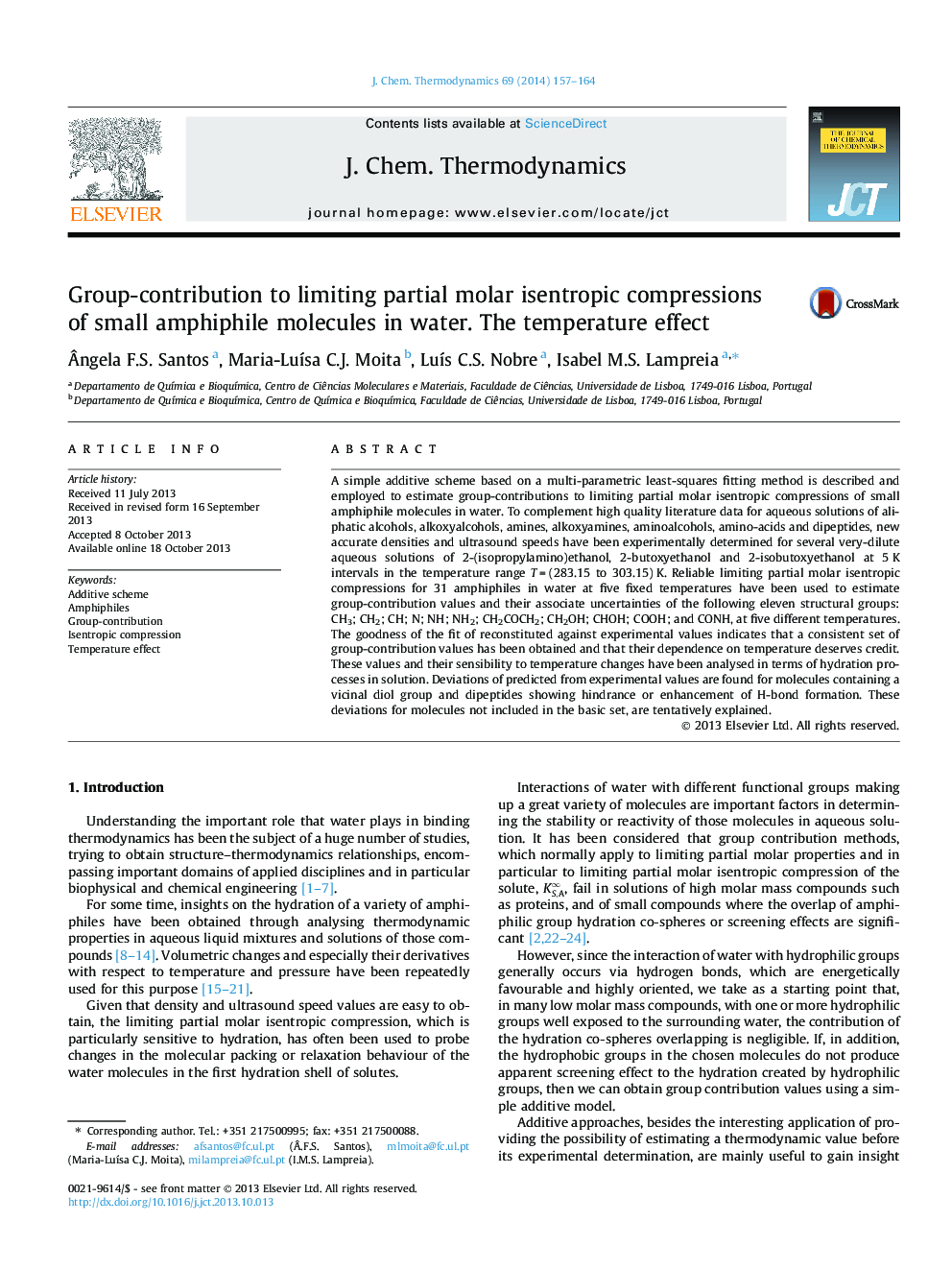| Article ID | Journal | Published Year | Pages | File Type |
|---|---|---|---|---|
| 215435 | The Journal of Chemical Thermodynamics | 2014 | 8 Pages |
•Limiting partial molar isentropic compressions for small amphiphiles were experimentally determined and compiled.•A simple additive scheme was applied to 31 amphiphiles in order to estimate group contribution values and their uncertainties.•The effect of temperature was studied for temperatures ranging T = (283.15 to 303.15) K.•Few large deviations for molecules not included in the basic set, are tentatively explained.
A simple additive scheme based on a multi-parametric least-squares fitting method is described and employed to estimate group-contributions to limiting partial molar isentropic compressions of small amphiphile molecules in water. To complement high quality literature data for aqueous solutions of aliphatic alcohols, alkoxyalcohols, amines, alkoxyamines, aminoalcohols, amino-acids and dipeptides, new accurate densities and ultrasound speeds have been experimentally determined for several very-dilute aqueous solutions of 2-(isopropylamino)ethanol, 2-butoxyethanol and 2-isobutoxyethanol at 5 K intervals in the temperature range T = (283.15 to 303.15) K. Reliable limiting partial molar isentropic compressions for 31 amphiphiles in water at five fixed temperatures have been used to estimate group-contribution values and their associate uncertainties of the following eleven structural groups: CH3; CH2; CH; N; NH; NH2; CH2COCH2; CH2OH; CHOH; COOH; and CONH, at five different temperatures. The goodness of the fit of reconstituted against experimental values indicates that a consistent set of group-contribution values has been obtained and that their dependence on temperature deserves credit. These values and their sensibility to temperature changes have been analysed in terms of hydration processes in solution. Deviations of predicted from experimental values are found for molecules containing a vicinal diol group and dipeptides showing hindrance or enhancement of H-bond formation. These deviations for molecules not included in the basic set, are tentatively explained.
Graphical abstractFigure optionsDownload full-size imageDownload as PowerPoint slide
